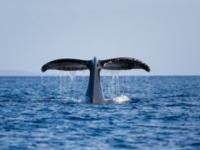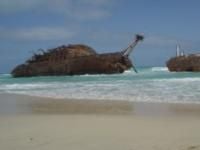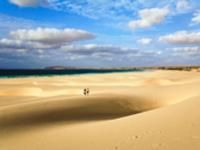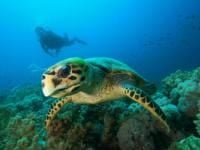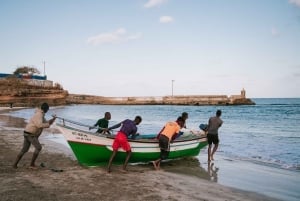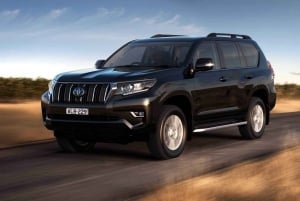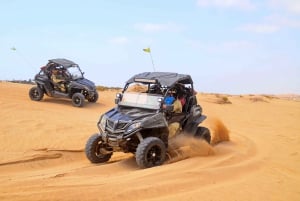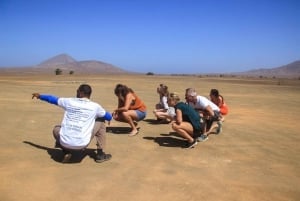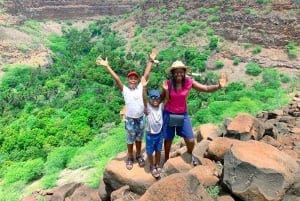Boa Vista
Boa Vista is a short 20 minute flight from Sal and is the 3rd largest Island in Cape Verde
Tourism in Boa Vista has undergone a dramatic change since the commencement of International flights in 2007 and the opening of all inclusive resort style hotels. It is now the second most popular destination in Cape Verde. With over 50km of chalk white sand, the main attractions are the incredible beaches. The most famous beach is Santa Monica, which is surely one of the most beautiful in the world. Boa Vista also offers fantastic water sport conditions, similar to Sal, and is a fantastic diving area for exploring the corals and many shipwrecks scattered around the Island.
Entertainment is generally confined to the Hotels, however Sal Rei, the main town does have a growing number of bars and restaurants. If you have a sense of adventure it's great to get out and sample the local night life.
Boa Vista is the birthplace of 'Morna' the national music of Cape Verde, made famous by Cesora Evora and has been likened to the Blues. The origins of the name Morna are not clear. Some people believe it comes from the English word 'to Mourn' or the Portuguese word 'moron' meaning warm and refers to the character and sweetness of the melodies.
Boa Vista has some fantastic wild life. Loggerhead turtles and a number of rare bird species, such as the Albatross and the Rabil, take advantage of the vast deserted beaches to the south. This is the 3rd most important nesting ground in the world for Loggerhead turtles, and the protection of these incredible animals is taken seriously with an active organisation of volunteers, supported by the government. Nesting season is between June and October. The island is also an important breeding ground for whales between the months of March and April. Taking a boat trip to witness this incredible sight is something not to be missed.
Boa Vista Island Highlights
Imagine a beautiful beach all to yourself which stretches as far as the eye can see. Santa Monica Beach is such a place. An incredible sight awaits you as you approach, and take in the completely deserted vast white sands. It's great fun to shed your clothes and go for a swim. There are extensive plans to create a tourism zone here and within a generation this beach will be lined with 5* hotels. So enjoy the peace and tranquility while you can.
Situated on the eastern side of the island, The Hartwell shipwrecked in 1787 carrying a valuable cargo is also well worth a visit. Part of the ship is still afloat and as recently as 1996 a South African salvage company recovered new treasures from the site. So you never know what you might come across.
Another one of the main highlights is the old fort of Dugue de Braganca created to protect the local population from the pirates. Situated on the Islet of Sal Rei directly in front of the village, it was previously known as Porto Ingles after English explorers who sought the valuable salt. The access to the fort is by boat or the adventurous can swim across, as the depth is less than 2 meters.
In the historic capital of Rabil, you can visit Sao Roque, the oldest church on the Island dating from 1801. Here you can also take a tour of the ceramic factory and see local handicrafts being produced, which have a significant African influence.
If you're feeling energetic it's also great fun to visit Deserto de Viana and run up and down the sand dunes! Or if you love breathtaking views, Morro Negro Lighthouse built around 1930 is worth a visit for the ever changing Atlantic Ocean seascapes.
To get the most out of your visit, particularly if you are island hopping I would certainly recommend hiring a local guide/driver in a 4x4. Alternatively you can hire a car or quad bike and make your own way.


